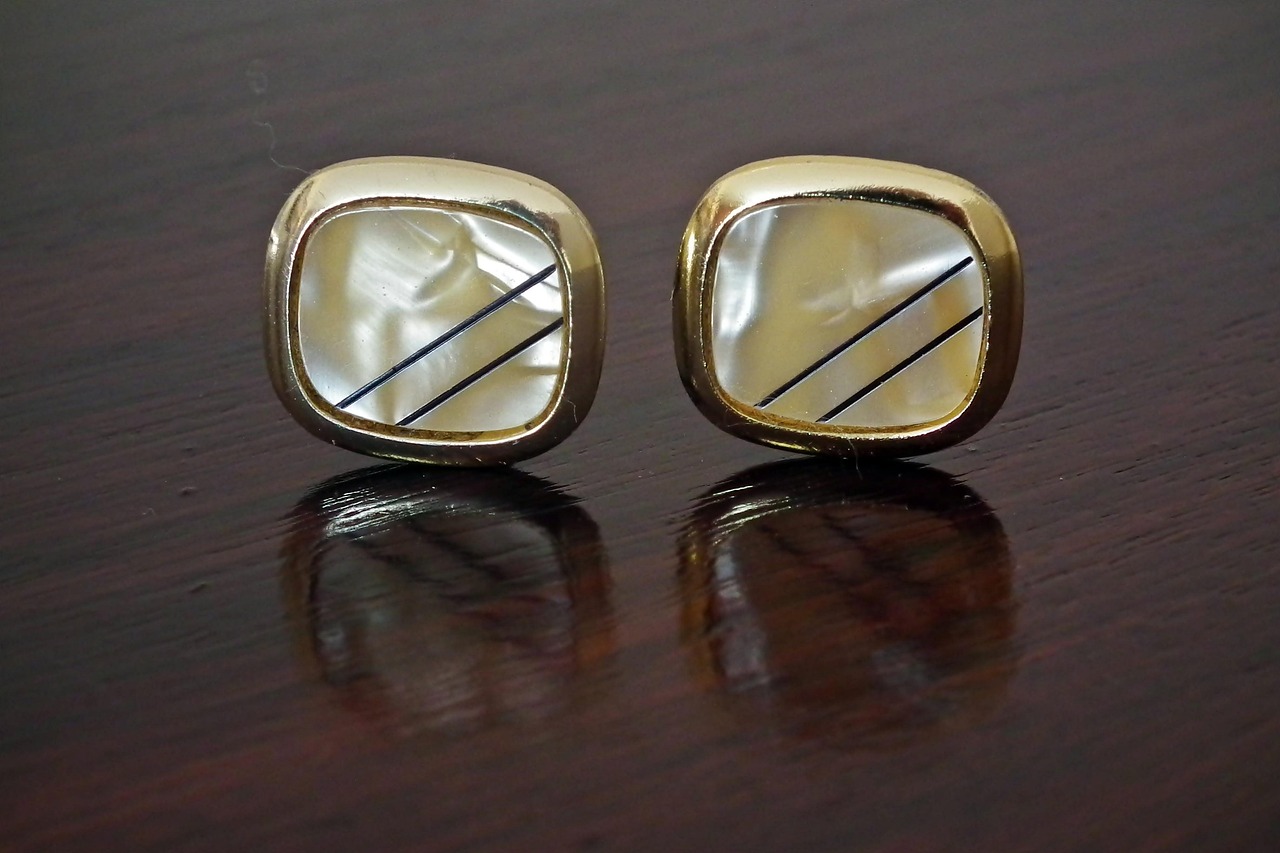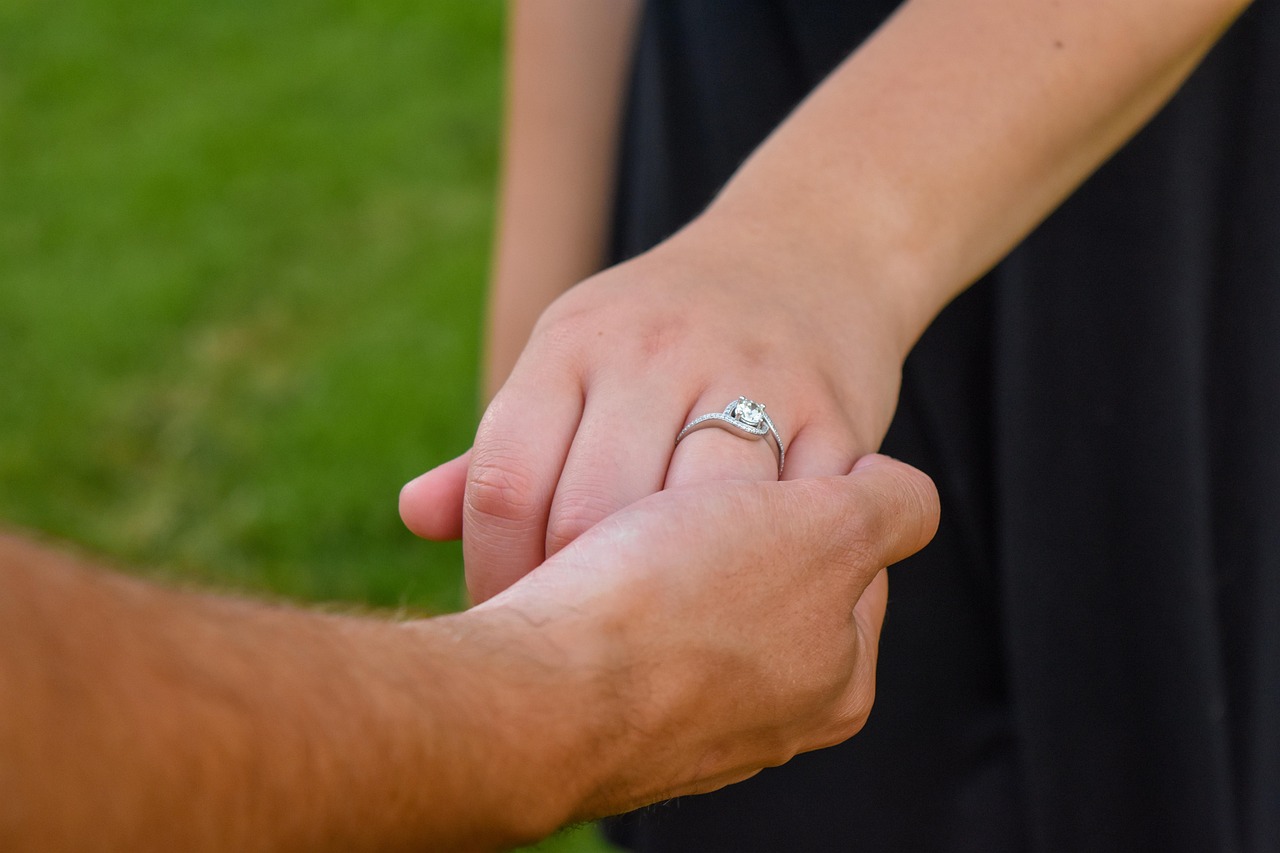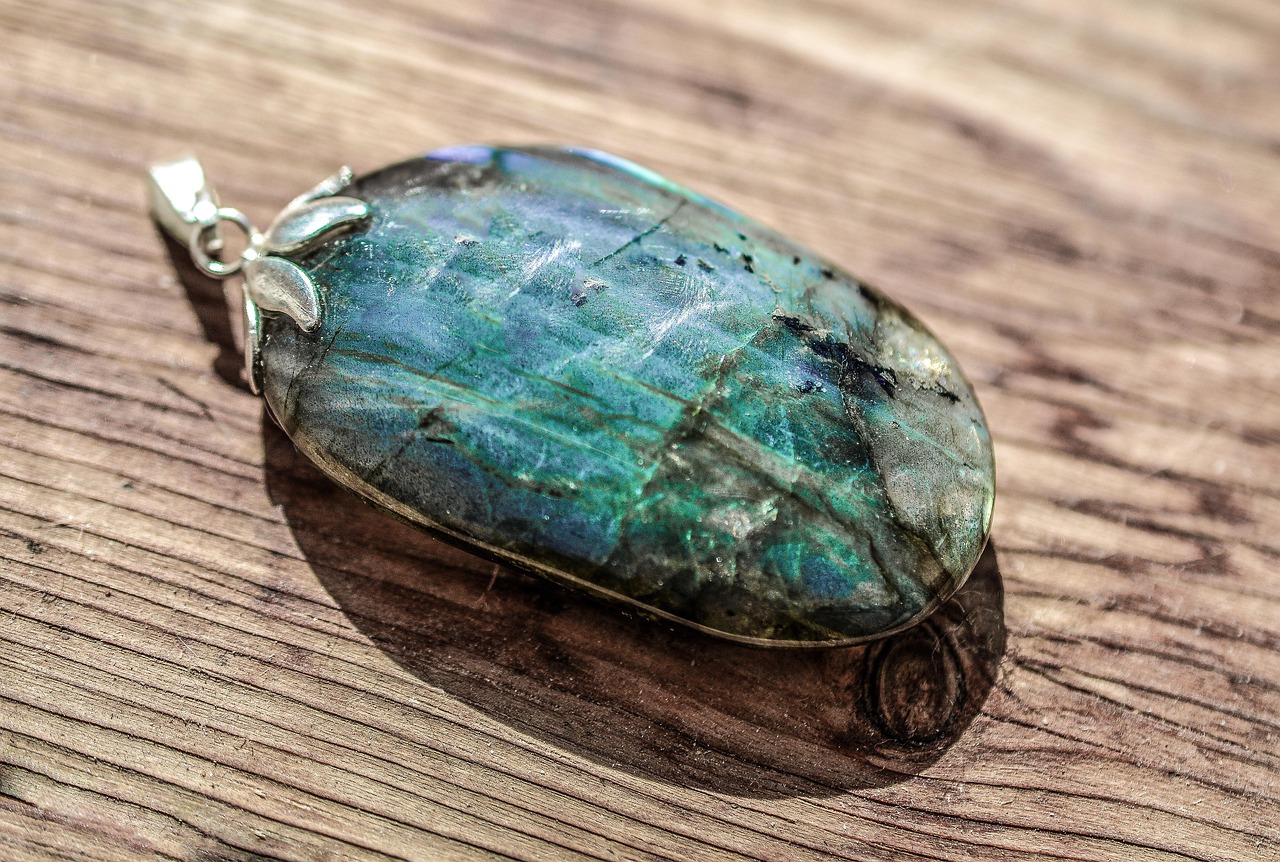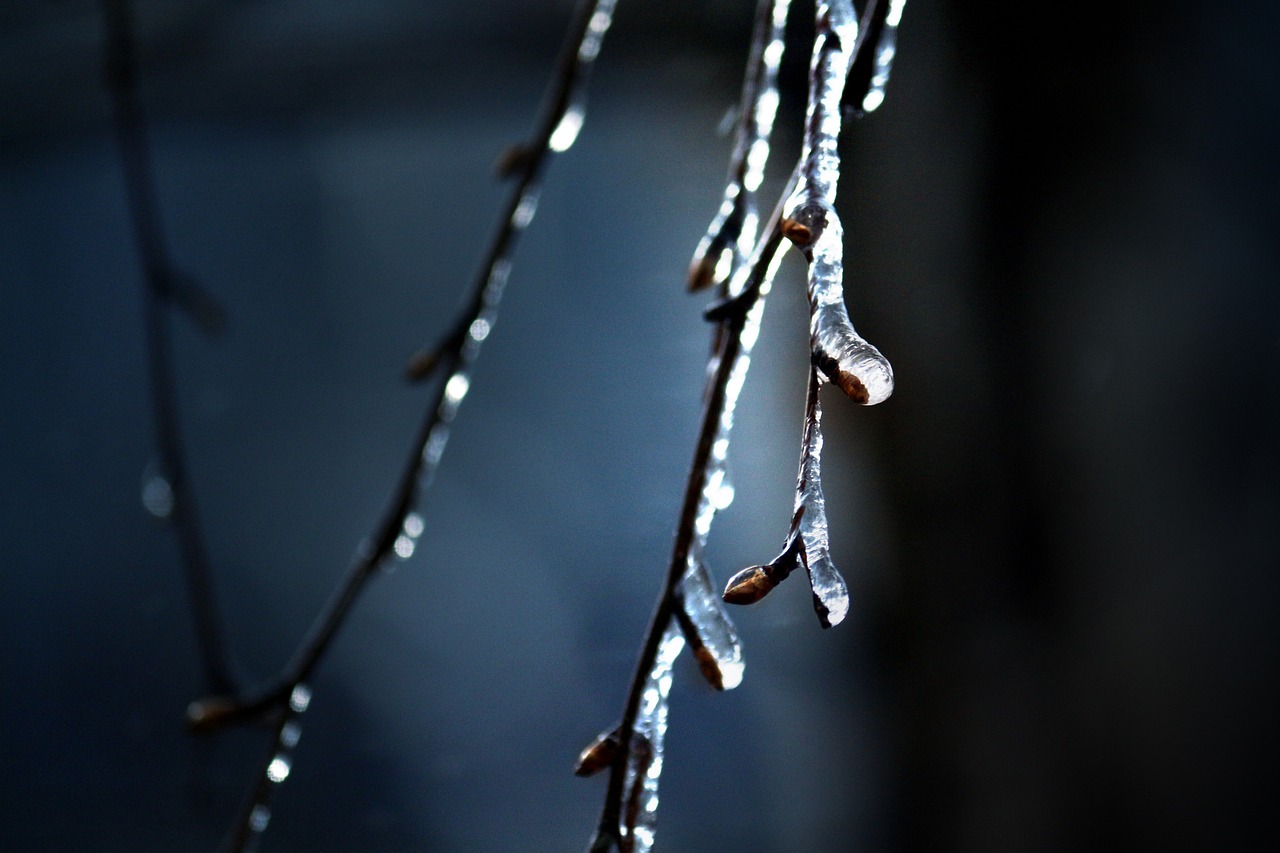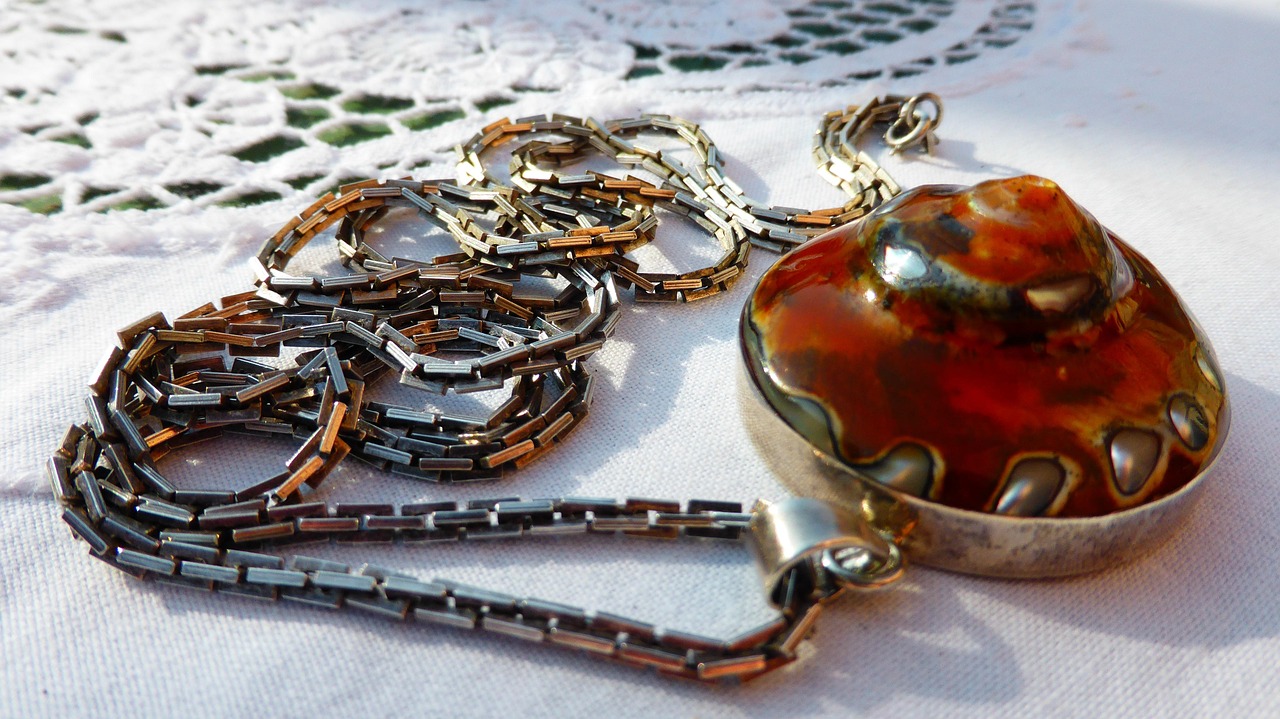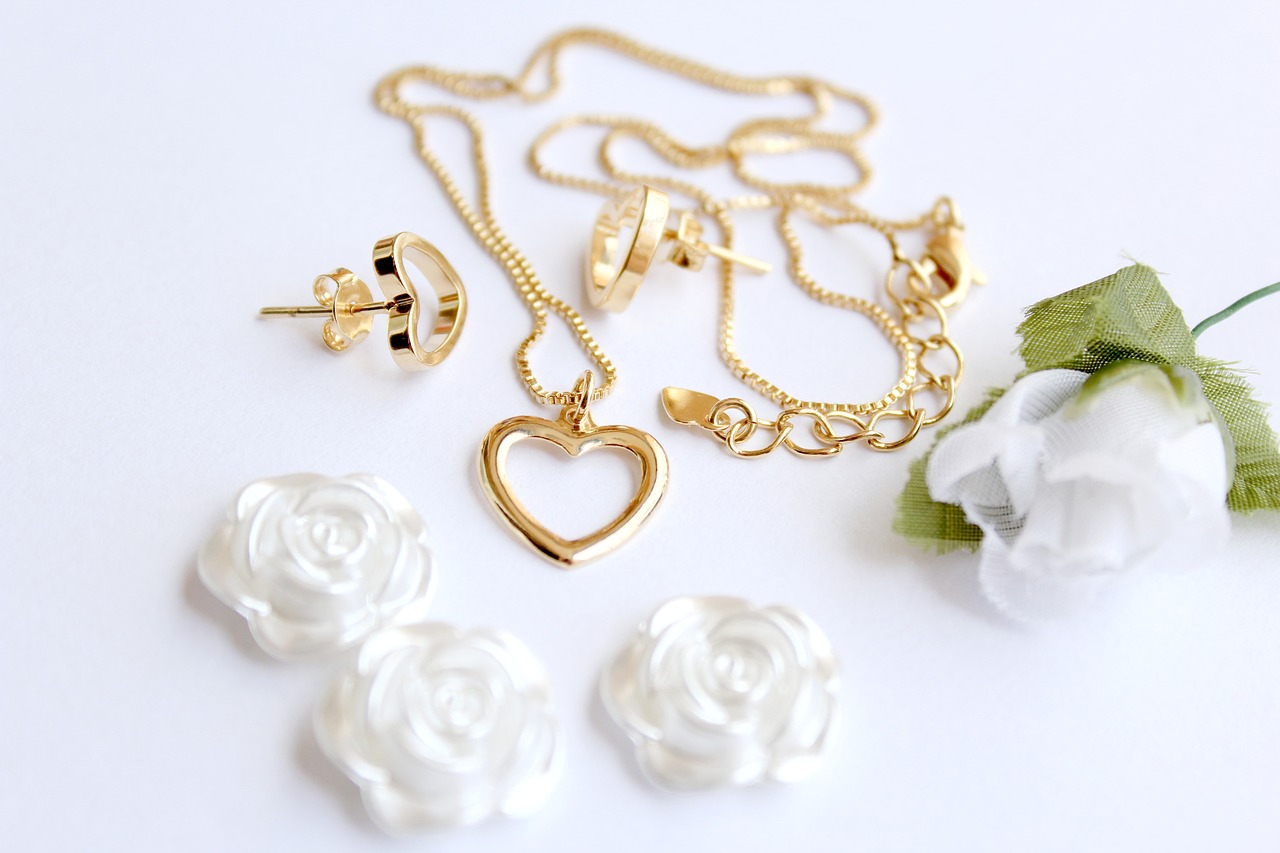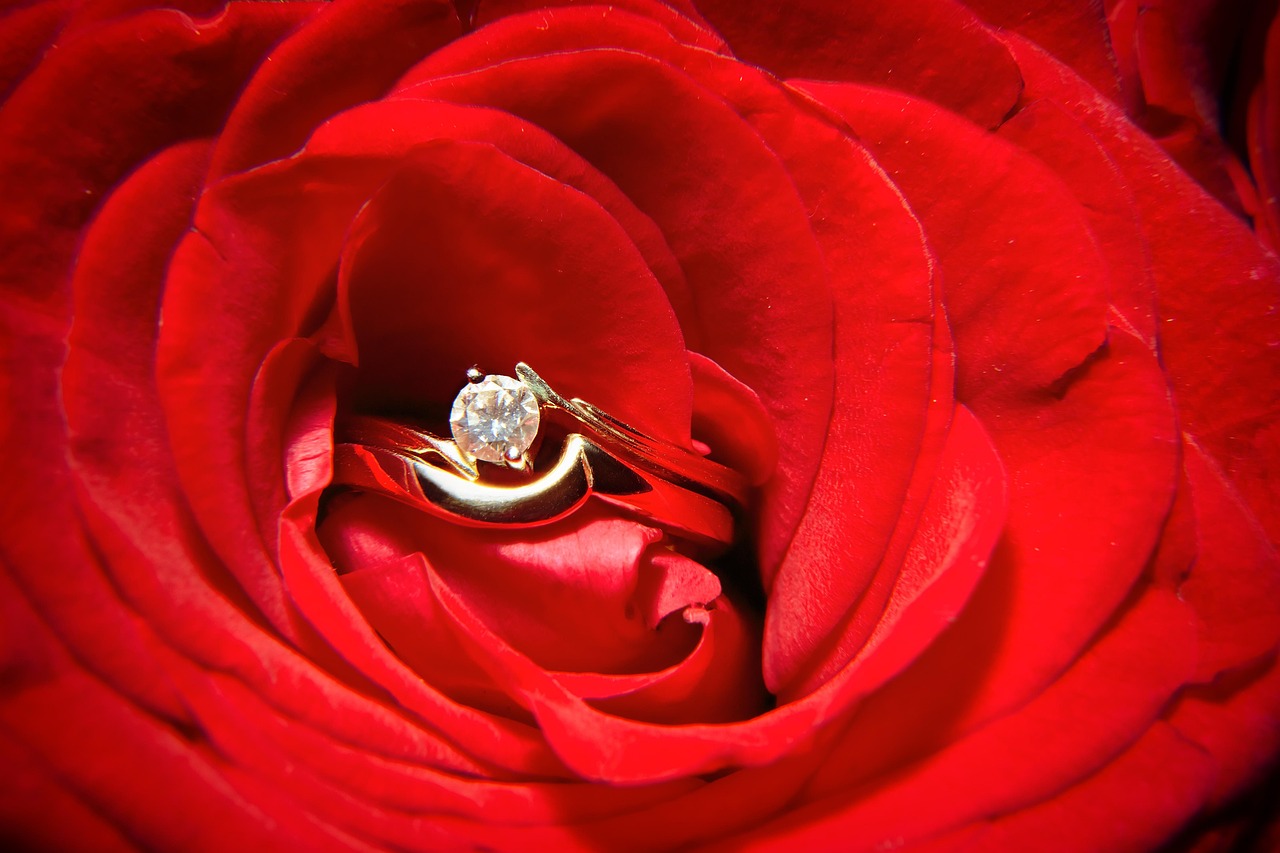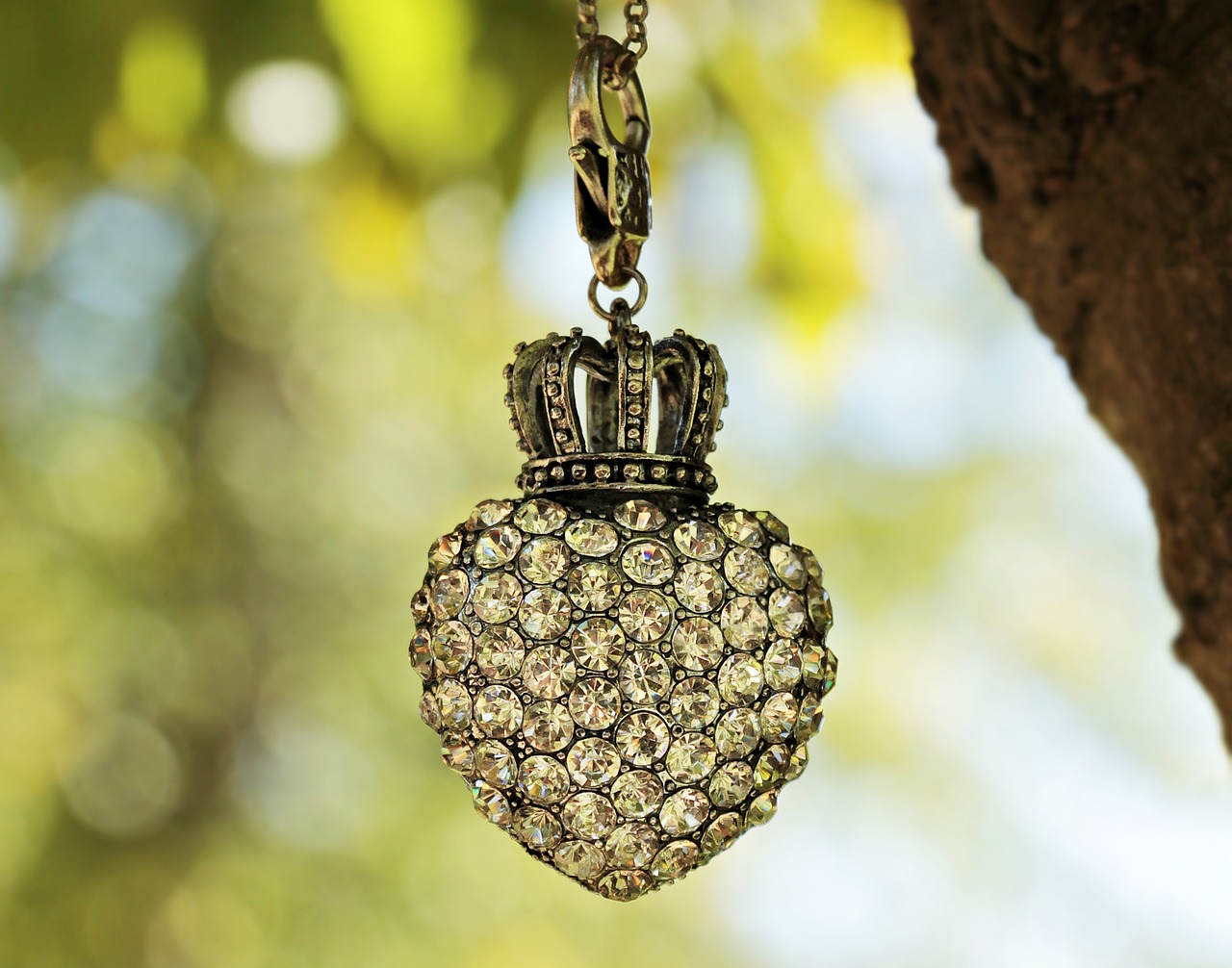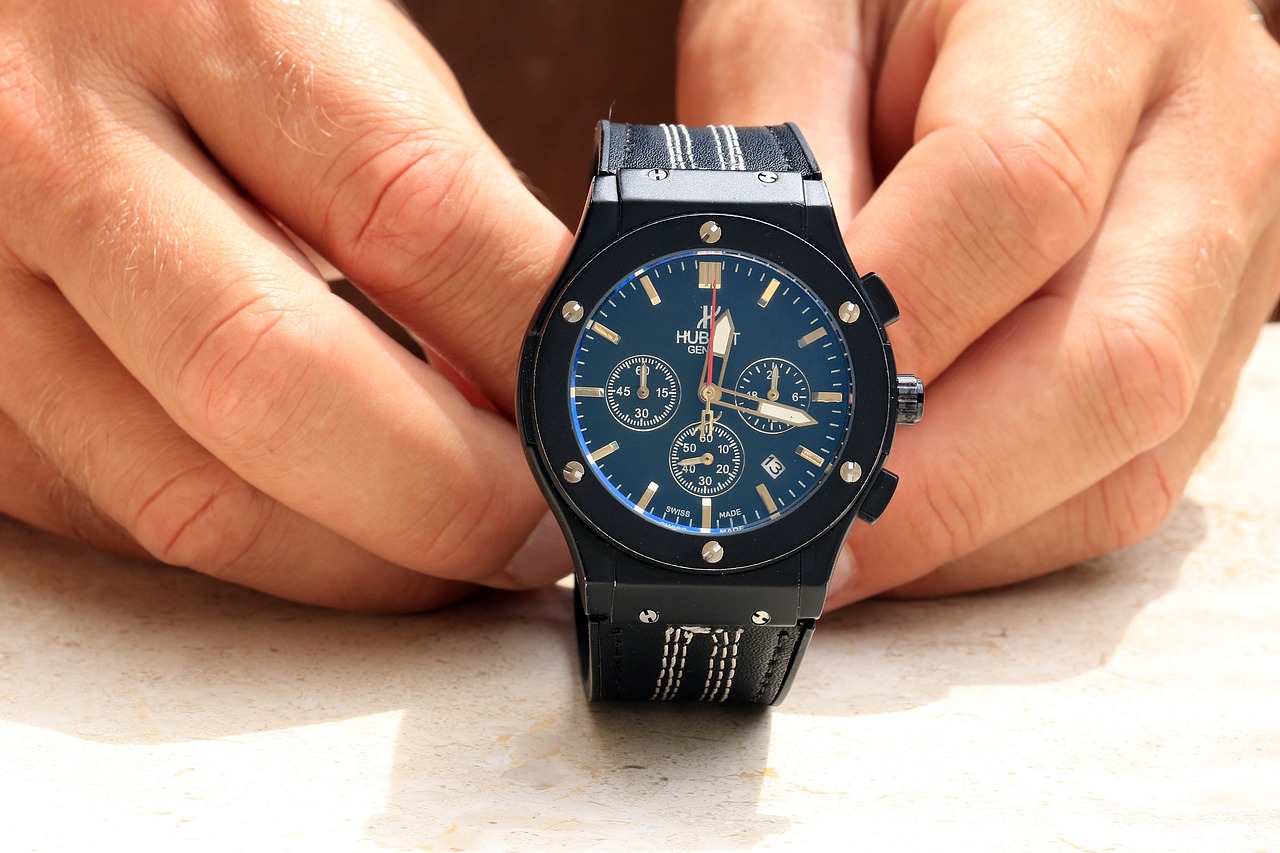Jewelry is more than just an accessory; it often holds sentimental value and represents personal style. However, over time, dirt, oils, and tarnish can dull its shine. This article delves into effective DIY methods for cleaning various types of jewelry at home, ensuring they remain sparkling and well-maintained without the need for professional services.
Understanding the most effective DIY jewelry cleaning methods can help you maintain your pieces without causing damage. Here, we’ll explore various techniques tailored to different materials, ensuring your jewelry stays in pristine condition.
Gold jewelry requires special care to maintain its luster. Discover simple methods using household items to safely clean and restore your gold pieces.
A gentle soap solution is often the best choice for cleaning gold. Mix a few drops of mild dish soap with warm water. Soak your gold jewelry for about 15 minutes, then use a soft brush to gently scrub any crevices. Rinse thoroughly and dry with a soft cloth.
Not all commercial cleaners are suitable for gold jewelry. Look for products specifically labeled as safe for gold. Always follow the manufacturer’s instructions to avoid damaging your precious pieces.
Silver jewelry can tarnish easily, but there are effective home remedies to restore its shine. Explore the best cleaning techniques for silver pieces.
Baking soda is a powerful cleaning agent for silver. Create a paste by mixing three parts baking soda with one part water. Apply the paste to your silver jewelry, gently rubbing it with a soft cloth. Rinse thoroughly and dry to reveal a brilliant shine.
Prevention is key to maintaining silver jewelry. Store your pieces in anti-tarnish pouches or cloths, and keep them in a cool, dry place to minimize tarnishing.
Gemstones require careful handling during cleaning to avoid damage. Find out the best practices for cleaning various types of gemstone jewelry.
Mild soap is often safe for most gemstones. Mix a few drops of gentle soap with lukewarm water and use a soft cloth to wipe your gemstones clean. Avoid harsh chemicals that can cause discoloration.
Certain substances can harm gemstones. Avoid using vinegar, ammonia, or bleach, as these can damage the surface and integrity of your jewelry.
Pearls are delicate and require special treatment. Discover the best methods for cleaning your pearl jewelry without causing harm.
A soft cloth is essential for cleaning pearls. Gently wipe each pearl after wearing to remove any oils or dirt. Avoid soaking them in water, as this can weaken the silk thread.
Proper storage is crucial for preserving the beauty of pearls. Store them in a soft pouch or wrapped in a soft cloth to prevent scratches. Keep them in a cool, dry place, away from direct sunlight.
By following these DIY methods, you can ensure that your jewelry remains as stunning as the day you bought it. Regular maintenance not only enhances their beauty but also prolongs their lifespan, allowing you to cherish them for years to come.

What Are the Best DIY Jewelry Cleaning Methods?
Jewelry cleaning is an essential part of maintaining the beauty and longevity of your precious pieces. Understanding the most effective DIY jewelry cleaning methods can help you keep your items sparkling without the risk of damage. Here, we’ll explore various techniques tailored to different materials, ensuring that your jewelry remains in top condition.
Cleaning jewelry at home can be both cost-effective and convenient. Different materials require different approaches, and it’s important to use the right method to avoid damaging your pieces. Here are some of the best DIY cleaning methods for various types of jewelry:
- Gold Jewelry: Gold is relatively soft and can scratch easily. A gentle solution of warm water and mild dish soap is often sufficient. Soak your gold pieces for about 15 minutes, then gently scrub with a soft toothbrush before rinsing thoroughly.
- Silver Jewelry: Silver tarnishes quickly, but a paste of baking soda and water can effectively restore its shine. Apply the paste with a soft cloth, rub gently, and rinse with warm water.
- Gemstone Jewelry: Gemstones require careful cleaning to avoid scratching. A mixture of mild soap and water is usually safe. Use a soft brush to clean around the stones, taking care not to damage any settings.
- Pearl Jewelry: Pearls are delicate and should be cleaned with a soft, damp cloth. Avoid soaking them in water, as this can weaken the string. Instead, gently wipe them after each wear to remove oils and dirt.
Gold jewelry requires special care to maintain its luster. Here are some effective methods:
A simple solution of warm water and a few drops of mild dish soap is often the best choice for cleaning gold. Mix the solution in a bowl, soak your jewelry for about 15 minutes, and then gently scrub with a soft toothbrush. Rinse thoroughly under lukewarm water and dry with a soft cloth.
While some commercial cleaners are safe for gold, it’s essential to read the labels carefully. Avoid products containing harsh chemicals or abrasives that can harm the finish of your gold jewelry. Always test a small area first if you choose to use a commercial cleaner.
Silver jewelry can tarnish easily, but there are effective home remedies to restore its shine:
Baking soda is a powerful cleaning agent for silver. To make a paste, mix three parts baking soda with one part water. Apply the paste to your silver jewelry using a soft cloth, gently rubbing to remove tarnish. Rinse with warm water and dry thoroughly.
Prevention is key to maintaining silver jewelry. Store your pieces in an airtight container or a cloth pouch to minimize exposure to air and moisture. Additionally, consider using anti-tarnish strips in your storage box.
Cleaning gemstone jewelry requires careful handling to avoid damage. Here are some best practices:
Mild soap is often safe for most gemstones. Mix a few drops of mild dish soap with warm water, and use a soft brush to gently clean the stones. Rinse thoroughly and dry with a soft cloth.
Avoid using harsh chemicals, ultrasonic cleaners, or abrasive materials, as these can scratch or damage the stones. Always check for specific care instructions based on the type of gemstone.
Pearls are delicate and require special treatment. Here’s how to clean them safely:
A soft, damp cloth is essential for cleaning pearls. Gently wipe the surface to remove dirt and oils, being careful not to soak them. After wearing, it’s good practice to wipe them down to maintain their luster.
Proper storage is crucial for preserving the beauty of pearls. Store them in a soft pouch or a separate compartment in your jewelry box to prevent scratches. Avoid storing them in plastic, as this can cause them to dry out.

How to Clean Gold Jewelry at Home?
Gold jewelry is not only a symbol of elegance but also an investment that requires proper care to maintain its brilliance and luster. Over time, exposure to dirt, oils, and environmental factors can dull the shine of your favorite gold pieces. Fortunately, you can easily restore their beauty using simple, household items. In this section, we will explore the best methods for cleaning gold jewelry at home.
Regular cleaning of gold jewelry is essential for several reasons:
- Preventing Tarnish: Although gold does not tarnish like silver, it can still accumulate dirt and oils that dull its shine.
- Maintaining Value: Keeping your gold jewelry clean helps preserve its value over time.
- Enhancing Appearance: Clean jewelry looks more appealing and can enhance your overall style.
Cleaning gold jewelry doesn’t require specialized products. Here are some common household items you can use:
- Dish Soap: A mild dish soap mixed with warm water is an effective cleaning solution.
- Baking Soda: Known for its gentle abrasive properties, baking soda can help remove stubborn grime.
- White Vinegar: This natural cleaner can help dissolve tarnish and buildup.
Follow these simple steps to clean your gold jewelry effectively:
- Prepare the Cleaning Solution: Mix a few drops of mild dish soap in a bowl of warm water. Ensure the water is not too hot, as extreme temperatures can damage certain settings.
- Soak the Jewelry: Place your gold jewelry in the solution and let it soak for about 15-20 minutes. This will help loosen any dirt or grime.
- Gently Scrub: Using a soft-bristled toothbrush, gently scrub the jewelry to remove any remaining dirt. Pay attention to intricate designs and settings.
- Rinse Thoroughly: Rinse the jewelry under lukewarm water to remove any soap residue. Ensure that you do this over a towel or a bowl to avoid losing any pieces.
- Dry Properly: Use a soft, lint-free cloth to gently dry the jewelry. Avoid using paper towels, as they can scratch the surface.
While many commercial jewelry cleaners are available, not all are suitable for gold. Always check the label for compatibility with gold jewelry. If you choose to use a commercial cleaner, follow the manufacturer’s instructions carefully. For best results, opt for a cleaner specifically formulated for gold.
To keep your gold jewelry looking its best, consider these maintenance tips:
- Avoid Harsh Chemicals: Keep your gold jewelry away from bleach, chlorine, and other harsh chemicals that can cause damage.
- Store Properly: When not in use, store your gold pieces in a soft cloth or a jewelry box to prevent scratches.
- Wear Regularly: Wearing your gold jewelry can actually help keep it shiny, as the natural oils from your skin can act as a protective layer.
By following these simple cleaning methods and maintenance tips, you can ensure that your gold jewelry remains as stunning as the day you bought it. Regular care will not only enhance its appearance but also prolong its life, allowing you to enjoy your precious pieces for years to come.
Using Soap and Water for Gold Jewelry
Cleaning your gold jewelry at home can be a simple and effective way to maintain its shine and beauty. Gold jewelry is often cherished for its elegant appearance, but it can accumulate dirt, oils, and grime over time. One of the safest and most effective methods for cleaning gold jewelry is using a gentle soap solution. This method not only cleans your jewelry but also ensures that it remains undamaged.
A gentle soap solution is often the best choice for cleaning gold. Here’s how to create the right mixture and the steps to follow for effective cleaning:
- Gather Your Supplies: You will need:
- Warm water
- Gentle dish soap (preferably a mild, non-abrasive variety)
- A soft-bristled toothbrush or a microfiber cloth
- A bowl for mixing
Step 1: Prepare the Soap Solution
In a bowl, mix a few drops of gentle dish soap with warm water. Ensure the water is not too hot, as extreme temperatures can damage certain types of gold jewelry, especially if they contain gemstones. A good ratio is about one tablespoon of soap for every cup of warm water.
Step 2: Soak the Jewelry
Place your gold jewelry into the soapy water and let it soak for about 15-20 minutes. This soaking will help loosen any dirt and grime that has built up on the surface.
Step 3: Gently Clean
After soaking, take a soft-bristled toothbrush or a microfiber cloth and gently scrub the jewelry. Pay special attention to crevices and areas where dirt tends to accumulate. Be careful not to apply too much pressure, as this can scratch the surface.
Step 4: Rinse Thoroughly
Once you have cleaned the jewelry, rinse it thoroughly under lukewarm running water. Make sure to hold the jewelry securely to prevent it from slipping through your fingers or down the drain. Rinsing removes any soap residue that could dull the shine of your gold.
Step 5: Dry Carefully
After rinsing, gently pat the jewelry dry with a soft cloth. Avoid using paper towels or rough fabrics, as these can scratch the gold. Allow your jewelry to air dry completely before storing it away.
Additional Tips:
- Always test your cleaning solution on a small, inconspicuous area first, especially if your gold jewelry contains gemstones.
- Avoid using harsh chemicals or abrasive cleaners, as these can damage the finish of your gold jewelry.
- Regular cleaning can help maintain the luster of your gold pieces, so consider incorporating this method into your jewelry care routine.
By following these simple steps, you can effectively clean your gold jewelry at home, ensuring it remains beautiful and radiant for years to come. Remember, regular maintenance is key to preserving the quality of your cherished pieces.
Commercial Cleaners: Are They Safe for Gold?
When it comes to maintaining the beauty of your gold jewelry, understanding the right cleaning methods is essential. While many people may consider using commercial cleaners to keep their pieces shining, not all products are suitable for gold. In this section, we will explore which commercial cleaners are safe for gold jewelry and how to apply them correctly to ensure your jewelry remains in pristine condition.
Gold jewelry can be sensitive to certain chemicals, which is why it’s crucial to choose the right cleaning products. Here are some safe options:
- Ammonia-Free Cleaners: These are typically safe for gold as they do not contain harsh chemicals that could damage the metal.
- pH-Balanced Solutions: Look for cleaners that are specifically formulated for jewelry, as they are designed to be gentle on precious metals.
- Ultrasonic Cleaners: While not a cleaner in the traditional sense, these devices can effectively clean gold jewelry without the use of harsh chemicals when used properly.
Even with safe products, it’s important to apply them correctly to avoid damaging your gold jewelry. Follow these steps:
- Read the Instructions: Always start by reading the label of the commercial cleaner to understand the recommended usage.
- Test on a Small Area: Before applying the cleaner to your entire piece, test it on a small, inconspicuous area to ensure it does not react adversely.
- Soak and Rinse: If the product is safe, soak your jewelry for the recommended time, then thoroughly rinse it under lukewarm water to remove any residue.
- Dry Gently: Use a soft, lint-free cloth to gently pat your jewelry dry. Avoid using paper towels as they can scratch the surface.
To ensure the longevity of your gold jewelry, avoid the following:
- Harsh Chemicals: Cleaners containing bleach or other strong chemicals can cause discoloration and damage.
- Excessive Scrubbing: Never scrub gold jewelry aggressively, as this can lead to scratches and loss of shine.
- Storing in Cleaners: Do not leave your jewelry submerged in cleaning solutions for extended periods, as this can weaken the metal.
If you’re hesitant to use commercial cleaners, there are effective DIY methods to clean your gold jewelry safely:
- Soap and Water: A mixture of warm water and mild dish soap can effectively clean gold without damaging it.
- Baking Soda Paste: For tougher tarnish, a paste made from baking soda and water can be gently applied with a soft cloth.
In summary, while commercial cleaners can be effective for cleaning gold jewelry, it is crucial to choose the right products and apply them correctly. By following the guidelines outlined above, you can maintain the beauty and integrity of your gold pieces while ensuring they remain free from damage.
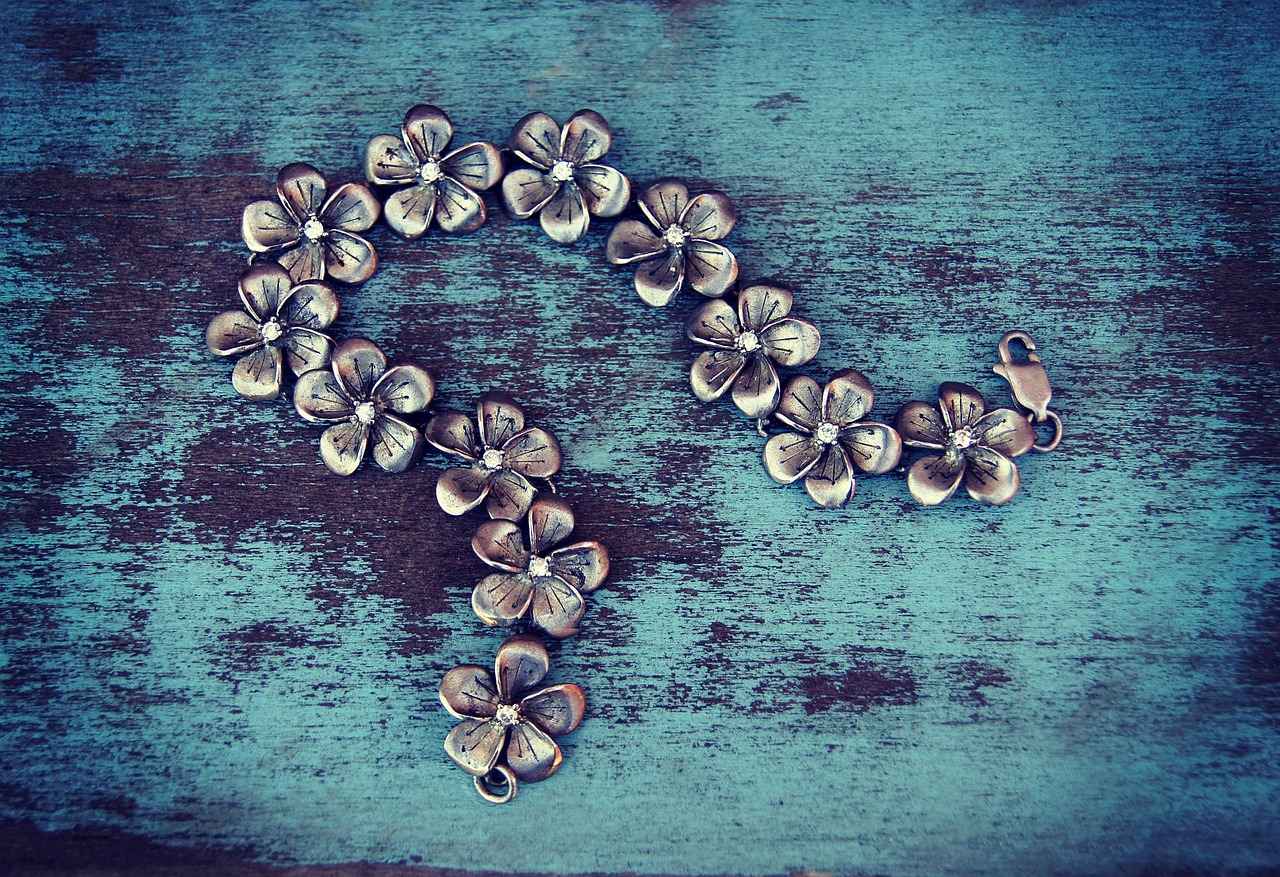
What About Cleaning Silver Jewelry?
Silver jewelry is beloved for its beauty and versatility, but it can tarnish easily, diminishing its shine and appeal. Fortunately, there are several effective home remedies that can help restore your silver pieces to their former glory. In this section, we will explore the best cleaning techniques for silver jewelry, ensuring that your cherished items remain radiant.
Tarnishing occurs when silver reacts with sulfur and moisture in the air, leading to a dull, discolored appearance. Understanding this process is crucial for effective cleaning and prevention. Regular maintenance can significantly reduce the frequency of tarnishing.
There are several DIY methods that can effectively clean silver jewelry without the need for harsh chemicals. Below are some popular techniques:
- Baking Soda and Water Paste: Create a paste using three parts baking soda and one part water. Apply it gently with a soft cloth, then rinse with warm water and dry thoroughly.
- Aluminum Foil and Baking Soda: Line a bowl with aluminum foil, add hot water and a tablespoon of baking soda. Soak your silver jewelry for a few minutes, then rinse and dry. This method utilizes a chemical reaction that can lift tarnish effectively.
- White Vinegar and Baking Soda: Soak your silver items in a mixture of half a cup of vinegar and two tablespoons of baking soda for two to three hours. Rinse with cold water and dry with a soft cloth.
To maintain its shine, it is advisable to clean your silver jewelry regularly, especially if you wear it often. Consider cleaning your pieces every few weeks, or as needed based on how quickly they tarnish.
Prevention is key to maintaining the beauty of your silver jewelry. Here are some effective tips:
- Store Properly: Keep your silver jewelry in a cool, dry place, preferably in anti-tarnish pouches or cloths.
- Avoid Moisture: Remove silver jewelry before showering, swimming, or exercising to minimize exposure to moisture.
- Regular Wear: Surprisingly, wearing your silver jewelry can help prevent tarnish as the natural oils from your skin can create a protective layer.
While cleaning silver, there are some practices you should avoid to prevent damage:
- Abrasive Cleaners: Never use harsh chemicals or abrasive materials that can scratch the surface of your jewelry.
- Ultrasonic Cleaners: These devices can be too harsh for certain types of silver jewelry, especially those with gemstones or delicate designs.
By following these simple yet effective cleaning techniques and preventive measures, you can keep your silver jewelry looking stunning for years to come. Regular maintenance not only enhances the appearance of your pieces but also ensures their longevity, allowing you to enjoy your beautiful silver jewelry to the fullest.
Using Baking Soda and Water for Silver
Baking soda is a versatile and effective cleaning agent, especially renowned for its ability to restore the shine of tarnished silver jewelry. This simple household product can be transformed into a powerful paste that effectively removes tarnish without damaging the delicate surface of your silver pieces. Below, we will explore the process of making this paste and the steps to follow for optimal results.
Baking soda is not only an affordable option but also a non-toxic alternative to harsh chemical cleaners. Its mild abrasiveness makes it ideal for gently scrubbing away tarnish while being safe for most silver items. Additionally, it is widely available and can be easily incorporated into your cleaning routine.
- Ingredients: You will need baking soda, water, and a small bowl.
- Mixing: Start by combining three parts of baking soda with one part of water in the bowl. Stir the mixture until it forms a thick paste.
- Consistency: The paste should be thick enough to adhere to your silver jewelry without dripping.
- Prepare Your Workspace: Ensure you have a clean, flat surface to work on. Lay down a soft cloth to protect your jewelry and catch any residue.
- Apply the Paste: Using a soft cloth or your fingers, gently apply the baking soda paste to the tarnished areas of your silver jewelry. Be sure to cover all affected spots.
- Let It Sit: Allow the paste to sit on the jewelry for about 10-15 minutes. This will give the baking soda time to break down the tarnish.
- Rinse Thoroughly: After the waiting period, rinse the jewelry under lukewarm water to remove all traces of the paste. Make sure to do this carefully to avoid any scratches.
- Dry and Polish: Use a soft, lint-free cloth to dry your jewelry. Gently buff it to restore its shine.
- Test First: Before applying the paste to your entire piece, test it on a small, inconspicuous area to ensure it does not cause any damage.
- Frequency: Clean your silver jewelry regularly to prevent heavy tarnish buildup. A quick clean every few months can keep your pieces looking their best.
- Storage: Store silver jewelry in a cool, dry place and consider using anti-tarnish pouches or cloths to minimize tarnishing.
By following these steps, you can effectively use baking soda to clean your silver jewelry at home. This method not only saves you money but also allows you to maintain the beauty of your cherished pieces with ease.
Preventing Tarnish on Silver Jewelry
Silver jewelry is cherished for its beauty and elegance, but it is also notorious for tarnishing over time. The good news is that with proper care and storage, you can significantly reduce the tarnishing process and keep your pieces looking their best. In this section, we will delve into effective strategies for , ensuring that your treasured items remain as stunning as the day you bought them.
Tarnishing occurs when silver reacts with sulfur compounds found in the air and other substances. This chemical reaction leads to the formation of silver sulfide, which gives silver its dull appearance. Understanding the causes of tarnish can help you take proactive measures to protect your jewelry.
- Use Anti-Tarnish Pouches: These specialized pouches are designed to absorb moisture and prevent tarnishing. Store your silver jewelry in these pouches when not in use.
- Keep It Dry: Moisture is a major contributor to tarnishing. Ensure that your silver jewelry is completely dry before storing it. Consider using silica gel packets in your jewelry box to absorb excess humidity.
- Avoid Exposure to Air: Exposure to air accelerates tarnishing. Store your silver pieces in airtight containers or zip-lock bags to minimize contact with air.
- Separate Your Jewelry: To prevent scratches and tangling, store each piece separately. Use individual compartments or soft cloth pouches for each item.
- Regular Cleaning: Gently clean your silver jewelry regularly with a soft cloth to remove dirt and oils that can contribute to tarnishing.
- Avoid Harsh Chemicals: Keep your silver jewelry away from household cleaners, perfumes, and lotions, as these can accelerate tarnishing.
- Wear It Often: Surprisingly, wearing your silver jewelry can help keep it shiny. The natural oils from your skin can create a protective layer against tarnishing.
If you notice that your silver jewelry has tarnished, don’t worry! There are several effective methods to restore its shine:
- Baking Soda Paste: Mix baking soda with a small amount of water to create a paste. Apply it gently with a soft cloth, then rinse and dry thoroughly.
- Commercial Silver Cleaners: Use a reputable silver cleaner designed specifically for jewelry. Always follow the manufacturer’s instructions to avoid damage.
- Toothpaste Method: A non-abrasive toothpaste can work wonders. Apply a small amount to a soft cloth and gently rub the tarnished areas, then rinse well.
By following these preventive measures and cleaning tips, you can keep your silver jewelry looking radiant and free from tarnish. Remember, prevention is key to maintaining the beauty of your silver pieces, allowing you to enjoy them for years to come.
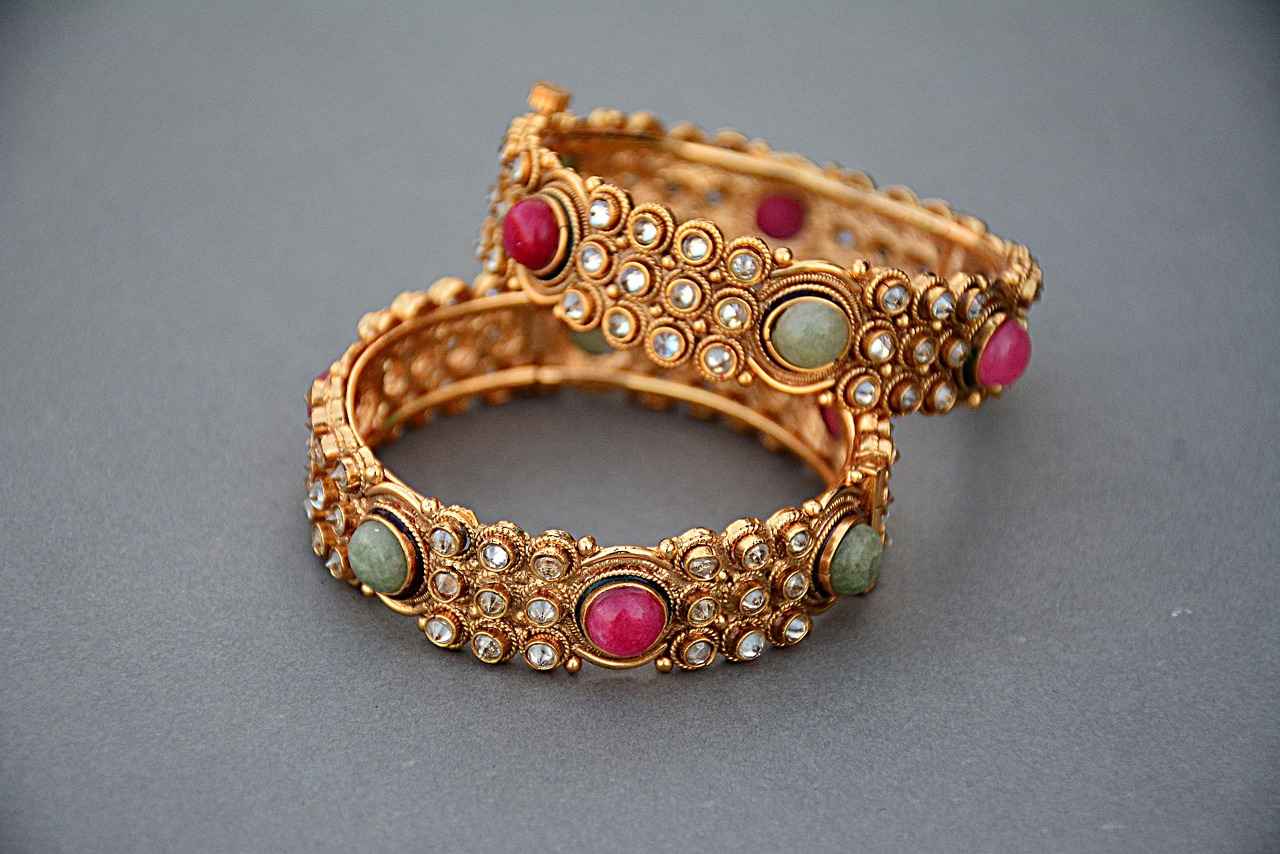
How to Clean Gemstone Jewelry Safely?
Cleaning gemstone jewelry requires careful handling to maintain its beauty and integrity. Each type of gemstone has unique properties that can influence the best cleaning methods. In this section, we will delve into safe practices for cleaning various types of gemstone jewelry, ensuring they remain dazzling without incurring damage.
Gemstones can be delicate, and improper cleaning methods can lead to scratches, discoloration, or even breakage. Understanding the specific needs of your gemstones is crucial for preserving their natural beauty. Here are some best practices for cleaning gemstone jewelry:
A gentle soap solution is often the safest choice for most gemstones. To create an effective cleaning solution:
- Mix a few drops of mild liquid soap with warm water in a small bowl.
- Soak the gemstone jewelry in the solution for a few minutes to loosen any dirt or grime.
- Use a soft-bristled toothbrush or cloth to gently scrub the surfaces, paying special attention to settings and crevices.
- Rinse thoroughly under lukewarm water and pat dry with a soft, lint-free cloth.
While cleaning gemstones, there are certain substances and practices to avoid to maintain their integrity:
- Avoid harsh chemicals: Substances like bleach, ammonia, or acetone can damage the surface of many gemstones.
- Skip ultrasonic cleaners: These devices can be too harsh for delicate stones, causing cracks or fractures.
- Don’t use abrasive materials: Steel wool or rough cloths can scratch the surface of gemstones.
Each gemstone may require specific care:
- Emeralds: Due to their natural inclusions, avoid soaking them for long periods. Clean gently with a damp cloth.
- Opals: These stones are porous and can absorb water. Use a damp cloth instead of soaking.
- Diamonds: While durable, they can still accumulate dirt. Clean them with a mild soap solution as mentioned above.
Regular maintenance is key to keeping your gemstone jewelry looking its best. It is advisable to clean your pieces every few months, or more frequently if worn often. Additionally, inspect your jewelry regularly for any signs of damage or loosening of stones.
Proper storage is essential to prevent scratches and damage. Here are some tips:
- Store each piece separately in a soft pouch or lined jewelry box.
- Avoid placing different types of gemstones together, as harder stones can scratch softer ones.
- Keep your jewelry away from direct sunlight and extreme temperatures to prevent fading or damage.
By following these guidelines, you can ensure your gemstone jewelry remains in pristine condition for years to come. Always remember that gentleness is key when it comes to cleaning and handling your precious pieces.
Using Mild Soap for Gemstone Cleaning
When it comes to maintaining the beauty of your gemstone jewelry, using the right cleaning method is crucial. One of the safest and most effective ways to clean gemstones is by using mild soap. This gentle solution can help you keep your jewelry sparkling without the risk of scratching or damaging the stones.
Choosing the right soap is essential. Look for a pH-balanced, mild soap that is free from harsh chemicals. A few drops of liquid dish soap or baby shampoo mixed with warm water can create an effective cleaning solution. Avoid soaps with added fragrances or dyes, as these can leave residues or cause discoloration.
- Start by filling a small bowl with warm water.
- Add a few drops of mild soap to the water.
- Stir gently to create a soapy mixture.
Once you have your cleaning solution ready, follow these steps to ensure effective cleaning:
- Soak: Place your gemstone jewelry in the soapy water for about 10-15 minutes. This will help loosen any dirt or grime.
- Gently Brush: Use a soft-bristled toothbrush or a microfiber cloth to gently scrub the surface of the stones. Be careful around any settings or prongs to avoid scratching.
- Rinse: After cleaning, rinse the jewelry under lukewarm water to remove any soap residue. Make sure to do this over a bowl or sink strainer to avoid losing any pieces.
- Dry: Use a soft, lint-free cloth to gently pat the jewelry dry. Avoid using paper towels or rough fabrics that could scratch the surface.
Mild soap is generally safe for most gemstones, including:
- Amethyst
- Topaz
- Citrine
- Aquamarine
However, some softer stones like opal and turquoise should be cleaned with extra caution, as they can be more susceptible to damage. Always check the specific care instructions for your gemstones before cleaning.
While mild soap is safe for most gemstones, there are certain things you should avoid:
- Harsh Chemicals: Avoid using bleach, ammonia, or any abrasive cleaners that can damage the stone or its setting.
- Ultrasonic Cleaners: These devices can cause fractures in some gemstones, especially softer ones.
- Hot Water: Always use lukewarm water; hot water can damage certain stones.
By following these guidelines, you can effectively clean your gemstone jewelry at home, ensuring it remains as beautiful as the day you bought it. Regular cleaning not only maintains the appearance of your pieces but also helps in spotting any potential issues early on. Remember, taking care of your jewelry is an investment in its longevity and beauty.
What to Avoid When Cleaning Gemstones?
Cleaning gemstone jewelry requires a delicate approach, as certain substances can significantly damage these beautiful pieces. Understanding what to avoid is crucial for maintaining the integrity and appearance of your gemstones. Below, we outline key considerations and substances to steer clear of when cleaning your gemstone jewelry.
One of the most important rules when cleaning gemstones is to avoid harsh chemicals. Substances like bleach, ammonia, and other strong cleaners can lead to discoloration and deterioration of the stone. Always opt for gentle cleaning solutions, such as mild soap mixed with water, to ensure your gemstones remain unharmed.
While ultrasonic cleaners can be effective for some types of jewelry, they can be risky for gemstones. The vibrations can cause loose stones to dislodge or even crack more delicate gems. It’s best to consult a professional before using ultrasonic cleaning methods on gemstone jewelry.
Extreme heat can also be detrimental to gemstones. Avoid exposing your jewelry to high temperatures, such as those found in a dishwasher or during steam cleaning. Heat can cause stones to crack or lose their luster. Always clean your gemstones at room temperature to ensure their safety.
Using abrasive materials, such as rough cloths or scrub brushes, can scratch the surface of gemstones. Instead, use a soft microfiber cloth to gently wipe away dirt and oils without causing damage. This small change can significantly extend the life of your jewelry.
Some gemstones are more sensitive than others. For instance, porous stones like turquoise or opal can absorb oils and dirt, making them harder to clean. Avoid soaking these stones in water or cleaning solutions. Instead, gently wipe them with a damp cloth to remove surface grime.
Many may not realize that alcohol-based cleaners can be harmful to certain gemstones. Alcohol can strip away protective coatings and damage softer stones. Always check the compatibility of your cleaning solution with your specific gemstone before use.
Each gemstone has unique properties and vulnerabilities. For example, softer stones like emeralds and pearls require more careful handling compared to harder stones like diamonds. Always research the specific care requirements for your gemstones to avoid common pitfalls.
While not a cleaning method, improper storage can lead to scratches and damage that cleaning cannot fix. Avoid tossing your gemstone jewelry into a drawer or jewelry box without protection. Instead, store each piece separately in a soft pouch or lined compartment to prevent contact with other pieces.
In summary, taking care when cleaning your gemstone jewelry is essential for preserving its beauty and integrity. By avoiding harsh chemicals, high temperatures, abrasive materials, and alcohol-based solutions, you can ensure your gemstones remain vibrant and intact. Always consider the unique properties of each stone and store them properly to prevent damage. With these tips in mind, your gemstone jewelry will continue to shine for years to come.
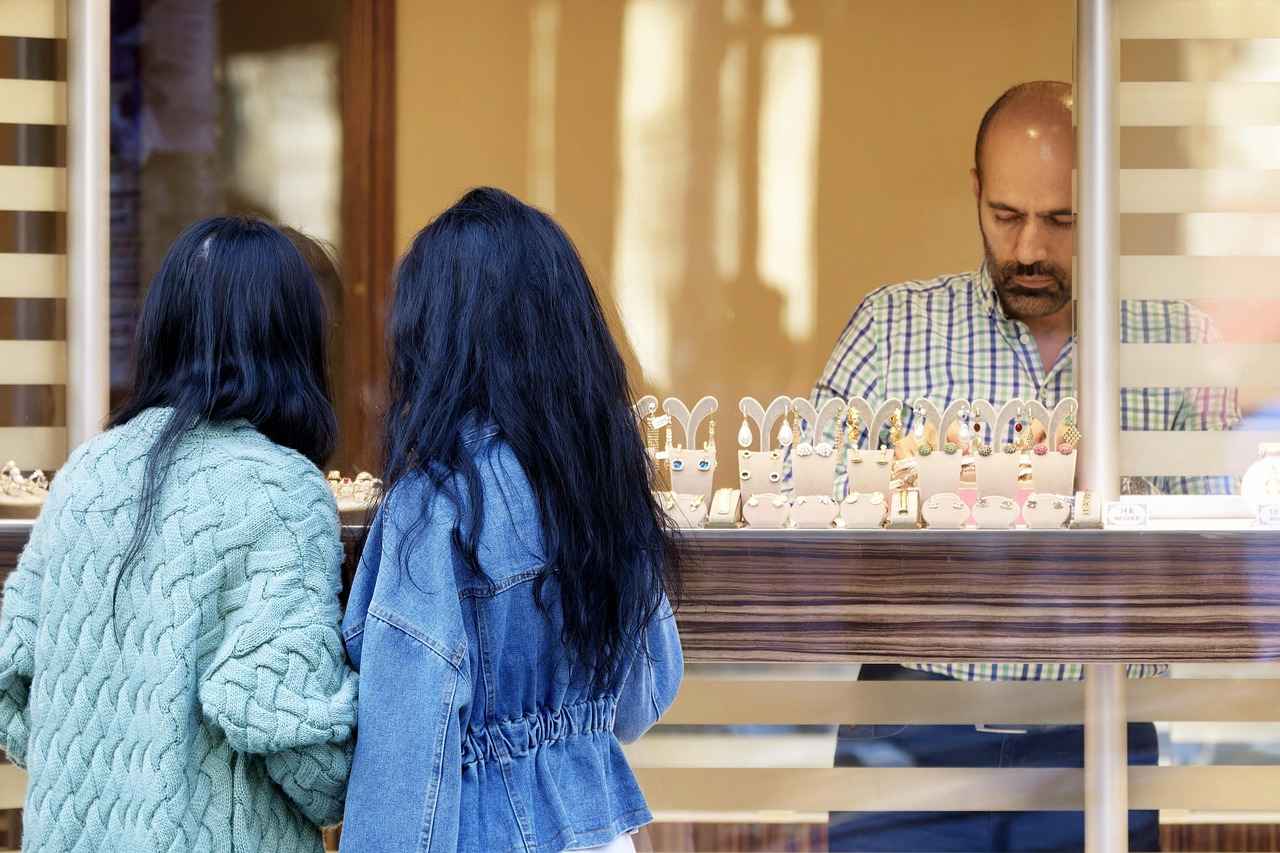
Can You Clean Pearls at Home?
Pearls are among the most exquisite and delicate forms of jewelry. Their natural beauty and luster can be diminished by improper care. Therefore, understanding how to clean and maintain them is crucial for preserving their elegance over time. In this section, we will explore effective methods to clean your pearl jewelry at home, ensuring you do so without causing any damage.
Yes, you can clean pearls at home, but it requires gentle handling and the right techniques. Pearls are porous and can absorb oils, dirt, and other substances, which can dull their shine. Here are some of the best methods to keep your pearls looking their best.
One of the simplest yet most effective ways to clean pearl jewelry is to use a soft, lint-free cloth. This method helps to remove surface dirt and oils without scratching the pearls. Here’s how to do it:
- Gently wipe each pearl with the soft cloth after wearing them to remove any oils or dirt.
- For a deeper clean, dampen the cloth slightly with water (avoid soaking) and wipe the pearls.
- Ensure that the cloth is dry before storing the pearls.
If your pearls require more than just a wipe-down, you can use a mild soap solution. Here’s a step-by-step guide:
1. Mix a few drops of mild liquid soap (like baby shampoo) with lukewarm water.2. Dip the soft cloth into the solution, wring it out thoroughly, and gently wipe each pearl.3. Rinse the cloth in clean water, wring it out, and wipe the pearls again to remove any soap residue.4. Allow the pearls to air dry completely before storing them.
When cleaning your pearls, it’s essential to avoid harsh chemicals and abrasive materials. Never use bleach, ammonia, or any strong detergents, as these can damage the surface of the pearls. Additionally, avoid using ultrasonic cleaners, as they can cause the pearls to crack or become discolored.
Proper storage is just as important as cleaning. To maintain the luster of your pearls:
- Store pearls in a soft pouch or a separate compartment in your jewelry box to prevent scratching.
- Avoid storing them with other jewelry pieces, especially those made of harder materials.
- Keep pearls away from direct sunlight and extreme temperatures, which can cause them to fade.
Regular maintenance is key to ensuring your pearls stay beautiful for years to come. Consider the following tips:
- Wear your pearls often; the natural oils from your skin can help keep them lustrous.
- Have your pearl jewelry restrung every few years, especially if you wear them frequently.
- Always clean pearls after wearing to prevent buildup of dirt and oils.
By following these simple yet effective methods, you can ensure that your pearl jewelry remains a cherished part of your collection, shining brightly for all occasions. Remember, pearls are a timeless investment, and with the right care, they will continue to captivate for generations.
Using a Soft Cloth for Pearl Jewelry
Pearls are among the most delicate and exquisite types of jewelry, known for their lustrous appearance and timeless appeal. However, they require special care to maintain their beauty and integrity. One of the simplest yet most effective methods for cleaning pearl jewelry is using a soft cloth. This method not only helps in removing dirt and oils but also ensures that the surface of the pearls remains undamaged.
To begin with, it is crucial to understand the right technique for cleaning pearls. First, choose a clean, soft cloth—preferably one made of cotton or microfiber. Avoid using paper towels or rough fabrics, as these can scratch the surface of the pearls. Here’s a step-by-step guide to effectively clean your pearls:
- Preparation: Make sure your hands are clean and dry before handling your pearl jewelry. This prevents transferring oils and dirt onto the pearls.
- Wipe Gently: Take the soft cloth and gently wipe the surface of each pearl. Use a circular motion to ensure that you cover the entire surface without applying too much pressure.
- Focus on Strands: If you are cleaning a pearl necklace or bracelet, pay special attention to the areas between the pearls where dirt can accumulate. Use the edge of the cloth to reach these spots.
- Drying: After cleaning, allow the pearls to air dry completely before storing them. This helps prevent moisture buildup, which can lead to damage over time.
In addition to regular cleaning, it’s important to note that pearls should be cleaned after each wear. The natural oils from your skin, along with cosmetics and perfumes, can dull their shine. By using a soft cloth after each use, you can prolong the life of your pearl jewelry.
Furthermore, consider the environment in which you store your pearls. They should be kept in a soft pouch or lined jewelry box to prevent scratches from other jewelry pieces. Avoid exposing them to harsh chemicals or extreme temperatures, which can affect their luster.
In conclusion, using a soft cloth is a simple yet effective way to clean and maintain your pearl jewelry. By following the proper technique and incorporating regular cleaning into your routine, you can ensure that your pearls remain as stunning as the day you bought them.
Storing Pearls to Maintain Their Luster
When it comes to jewelry care, pearls hold a unique place due to their delicate nature and stunning beauty. Proper storage is crucial for preserving the beauty of pearls. In this section, we will explore effective strategies for storing your pearls to prevent damage and maintain their luster.
Pearls are organic gems that can be sensitive to environmental factors. They are composed of layers of nacre, making them susceptible to scratches and discoloration. Proper storage helps to protect pearls from damage caused by moisture, temperature fluctuations, and contact with other jewelry.
- Use a Soft Cloth or Pouch: Always store pearls in a soft cloth or a dedicated jewelry pouch. This prevents them from coming into contact with harder materials that could scratch their surface.
- Avoid Plastic Bags: While it may seem convenient, plastic bags can trap moisture and lead to the formation of mold. Instead, opt for breathable fabric.
- Keep Pearls Separate: Store pearls away from other jewelry pieces, especially those made of metals or gemstones that can scratch or damage them.
To maintain the quality of your pearls, consider the following storage conditions:
- Temperature: Store pearls in a cool, dry place. Extreme heat can cause them to dry out and lose their luster.
- Humidity: Aim for a moderate humidity level. Too much moisture can lead to mold, while too little can dry out the nacre.
When it comes to necklaces and bracelets, it is important to avoid knots and tangles that can cause strain on the string. Here are some tips:
- Lay Flat: Store pearl necklaces flat in a padded jewelry box or container to prevent tangling.
- Use Individual Slots: If your jewelry box has individual slots, utilize them to keep each piece separated.
In addition to proper storage, regular maintenance is essential for keeping pearls in pristine condition. Here are a few tips:
- Clean After Wear: Gently wipe pearls with a soft cloth after each wear to remove oils and dirt.
- Re-string Periodically: Consider re-stringing pearl necklaces every few years to ensure the thread remains strong and secure.
By following these tips and best practices for storing pearls, you can ensure that your precious jewelry remains beautiful and lustrous for years to come. Remember, taking the time to care for your pearls will pay off in the long run, allowing you to enjoy their elegance and charm.
Frequently Asked Questions
- What household items can I use to clean my jewelry?
You can use simple items like mild soap, baking soda, and water to clean your jewelry at home. These ingredients are gentle yet effective for most materials, helping to restore shine without causing damage.
- Is it safe to use commercial cleaners on gold jewelry?
Not all commercial cleaners are safe for gold. It’s essential to check the labels and choose products specifically designed for gold jewelry to avoid any potential harm.
- How can I prevent tarnish on my silver jewelry?
To minimize tarnishing, store your silver jewelry in a cool, dry place, preferably in anti-tarnish pouches or cloths. Keeping it away from moisture and chemicals will help maintain its shine.
- Can I clean pearls using the same methods as other gemstones?
No, pearls are much more delicate. It’s best to use a soft cloth to gently wipe them clean and avoid soaking them in water or using harsh cleaners.
- What should I avoid when cleaning gemstone jewelry?
Avoid using abrasive cleaners or rough cloths, as they can scratch the surface of gemstones. Also, steer clear of harsh chemicals that might damage the stones.

